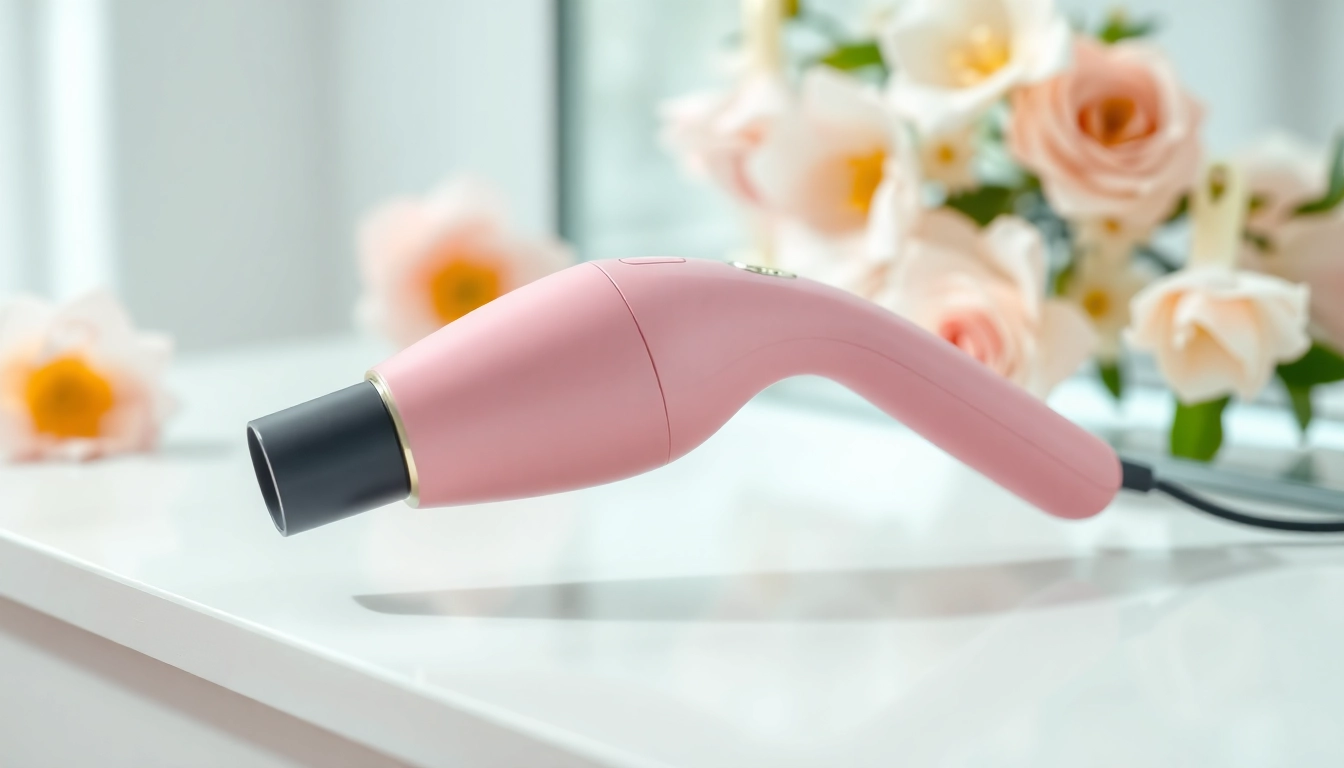Understanding Hairdressing Tools
What Are Hairdressing Tools?
Hairdressing tools encompass a wide variety of instruments designed specifically for cutting, styling, and managing hair. These tools range from scissors and combs to more advanced electric devices such as hairdryers, straighteners, and curling irons. The right set of hairdressing tools is essential for hairstylists and home users alike, as they not only impact the quality of the hairstyle but also influence the overall efficiency of the hairdressing process.
History and Evolution of Hairdressing Tools
The history of hairdressing tools is as textured and varied as the hairstyles they create. Early humans utilized rudimentary tools made from stones and animal bones for cutting hair. As cultures developed, so did the sophistication of their hairdressing tools. The Egyptians, for example, used metal instruments as early as 3000 BC. By the 18th century, specialized tools like the straight razor became widely popular, changing the landscape of hairdressing. The advent of electricity in the 20th century ushered in electric shavers, hair dryers, and curling irons, revolutionizing how people styled their hair and paving the way for modern hairdressing.
Key Components of Effective Hairdressing Tools
To provide the best results, hairdressing tools should exhibit certain key components: durability, ease of use, ergonomics, and versatility. A durable tool should withstand repeated use without losing its functionality. Ease of use ensures that both professional stylists and casual users can operate the tool effectively, while ergonomic designs prevent strain during extended use. Versatility refers to a tool’s ability to perform multiple functions, making it an invaluable asset in any hairdressing kit.
Essential Hairdressing Tools for Professionals
Must-Have Hairdressing Tools for Every Salon
Every salon should be equipped with essential hairdressing tools that cater to a variety of styling techniques. Fundamental tools include:
- Scissors: High-quality scissors tailored for cutting hair, allowing for precision and control.
- Combs and Brushes: Various combs for detangling, sectioning, and styling; brushes for blow-drying and finishing touches.
- Curling Irons and Straighteners: Devices that utilize heat to create waves, curls, or straight locks.
- Hairdryers: Essential for drying hair quickly and efficiently, available in various wattages and features.
- Clippers: Necessary for men’s haircuts or short hairstyles; these come with different guide combs for desired lengths.
Comparing Electric vs. Manual Hairdressing Tools
The debate between electric versus manual hairdressing tools often centers on efficiency and results. Electric tools, such as hair dryers and curling irons, save time and offer consistent heat distribution, which is crucial for long-lasting styles. However, manual tools, like scissors and combs, provide a level of control and precision that electric options may lack. Many stylists find that a hybrid approach—utilizing both electric and manual tools—affords the best results in their styling regime.
Brand Recommendations for Quality Hairdressing Tools
Choosing the right brand can significantly impact the quality of hairdressing tools. Here are some notable brands known for their excellence:
- Wahl: Renowned for its clippers and trimmers that deliver professional results.
- Ghd: Famous for its hair straighteners and styling tools that utilize advanced technology for effective styling.
- BaByliss: Offers a wide range of innovative hair tools favored by professionals worldwide.
- Paul Mitchell: A well-respected brand providing high-quality combs and brushes.
- Denman: Known for its iconic brushes that provide excellent grip and control during styling.
Choosing the Right Hairdressing Tools for Your Needs
Assessing Your Hair Type and Styling Goals
With the plethora of hairdressing tools available, it’s crucial to assess your hair type and styling goals before making a purchase. Different hair types—straight, wavy, curly, or coily—require different tools for optimal styling. For instance, curly hair often benefits from wide-tooth combs and diffusers, while straight hair may be best suited to ceramic straighteners that minimize heat damage. Understanding your hair’s unique characteristics will guide you toward the most effective tools for your needs.
Budgeting for High-Quality Hairdressing Tools
Investing in high-quality hairdressing tools is essential for achieving professional results. While there are budget-friendly options, it’s important to remember that quality often correlates with cost. Allocate funds based on your professional requirements and personal styling ambitions. Seek versatile tools that can perform multiple functions to maximize your investment. For instance, an all-in-one styling tool can serve as both a curling iron and a straightener, ultimately saving space and money.
Where to Purchase Reliable Hairdressing Tools
When purchasing hairdressing tools, it’s essential to buy from reputable retailers. Consider authorized brand websites, professional beauty supply stores, and trusted e-commerce websites. Always check customer reviews and ratings to ensure the reliability and quality of the tools you’re considering. Furthermore, keep an eye out for sales or bundle deals, which can provide significant discounts on high-quality tools.
Maintenance and Care of Hairdressing Tools
Cleaning Techniques for Hairdressing Tools
Proper maintenance enhances tool longevity and performance. Regularly cleaning hairdressing tools is crucial to prevent the buildup of hair products, dust, and dirt. For combs and brushes, warm soapy water followed by thorough rinsing and drying is effective. Scissors should be wiped with a soft cloth to remove hair and debris, and oiling the blades occasionally can keep them functioning smoothly. Electric tools should also be cleaned following the manufacturer’s guidelines to ensure safe and effective usage.
Storage Solutions to Extend Tool Lifespan
The way tools are stored can significantly affect their lifespan. It’s advisable to use a dedicated storage solution, such as a tool bag or a specialized cabinet, to keep hairdressing tools organized and protected. Avoid tossing tools into drawers where they can bump against each other and get damaged. Consider using protective sheaths for scissors and blade covers for clippers to prevent dulling and nicks.
Signs Your Hairdressing Tools Need Replacement
Even the best tools wear out over time. Some signs that it may be time to replace your hairdressing tools include:
- Excessive rust, cracks, or chips on blades.
- Poor performance—tools not cutting efficiently or not holding heat properly.
- Signs of electrical issues in electric devices, such as frayed cords or unusual noises.
- Tools feeling heavy or uncomfortable, indicating wear on ergonomic designs.
Trends in Hairdressing Tools Innovation
Technological Advances in Hairdressing Tools
Hairdressing tools continuously evolve, driven by technological innovations. Features such as temperature control, smart technology, and rapid heat recovery are increasingly common in modern tools. These innovations not only enhance hair health by minimizing heat damage but also improve efficiency for stylists. Tools equipped with sensors to adjust temperature based on hair type are gaining popularity, reflecting a shift towards personalized hair care.
Eco-Friendly Hairdressing Tools: Sustainable Options
With growing awareness of environmental issues, the demand for eco-friendly hairdressing tools has also surged. Brands are beginning to offer tools made from sustainable materials or utilizing energy-efficient technologies. For example, some hairdryers now boast settings that consume less power without compromising on performance. Choosing eco-friendly tools helps reduce one’s carbon footprint and supports sustainable practices within the beauty industry.
Future Predictions for Hairdressing Tools Development
Looking ahead, the continued integration of artificial intelligence and smart technology in hairdressing tools is anticipated. Future developments may lead to tools that can analyze hair types and conditions, automatically adjusting their settings for optimal styling results. Moreover, trends towards customization are likely to grow, allowing consumers to create tools suited to their specific needs. As consumer demands evolve, so will the tools of the trade, creating exciting possibilities for both professional and amateur hairstylists.



